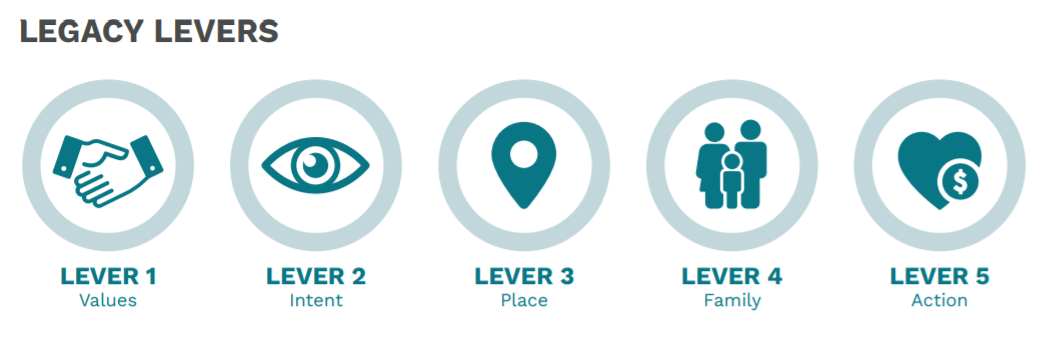Legacy in Family Philanthropy: A Modern Framework

Courtesy of Monstera From Pexels
This blog post is excerpted from NCFP’s new report Legacy in Family Philanthropy: A Modern Framework
Historically, legacy in family philanthropy has been considered from a retrospective point of view. From an external vantage point, legacy has often been seen as the sum philanthropic impact of a family, the culmination of its efforts. That is, what building did you build, what initiative did you start, what mission did you stand for, what change-making did you contribute to? Within giving families themselves, legacy has often been understood as how a family looks back at what has been passed down to them, from stories to values, from mission to broader guidance or direction in their giving.
But based on research with dozens of giving families of all sorts, from fifth
generation foundations to younger first time donors using donor-advised funds, we have seen a fresh understanding emerge. This new perspective offers a new way of thinking about and approaching the complex notion of legacy.
Amongst emerging leaders in the next generation of philanthropists, the prevailing understanding of legacy interweaves why and how we give.
“I think it’s important to think outside of ourselves first and foremost. Why are we doing philanthropy? The way we craft our giving, wherever it’s directed, should be about the people we’re trying to impact and how we’re trying to make change. Then your legacy comes naturally. We are better for thinking first about that and then about how we get that done. People talk
about the vehicles you use. I think first think about what you’re trying to accomplish and then everything falls backward from there…how do you do that work?”–Sapphira Goradia, Executive Director, Vijay and Marie Goradia Foundation
This notion of looking outside ourselves to consider legacy rang true across leaders of both longstanding and newer giving families.
Building upon this new understanding, the moment is ripe to assert a proactive modern framework for legacy, one that is creative and formative, that encourages clarity of values and deliberate choice-making, and that results in increased impact in the world, as well as greater satisfaction for giving families. This is a framework that is inclusive of and accessible for all sorts of donors, new and longstanding, from myriad backgrounds, identities, and levels of giving. Legacy is not just for large institutional givers; it can be a powerful and meaningful framework for families working at all scales.
This is not to suggest the field abandon retrospection—but rather to combine looking back with looking forward, while meeting present needs head-on. In many ways, legacy is perception. But you can—and should—own the notion of legacy in an active way. Let it not be something that happens to philanthropic families—rather, let it be something you craft with intentionality, reflect upon, and continually refine. Legacy can be something you actively define, evolve, and carry forward. And this is true whether you are a multi-generational giving family or one taking a timebound, or spend-down, approach to your philanthropy.
So how do you do this?
You are warmly invited to consider the levers that can be pulled, or building blocks that can be creatively combined, to create your family giving legacy. These levers are not an exhaustive catalogue of all the possible component parts of legacy, but rather, a selective menu of the most compelling high level ideas that emerged out of many amazing conversations with real giving families.
 Some of these concepts may resonate immediately as familiar and relevant, while others may be new or even challenging for you. Over time, the relative importance of different levers may shift as your family grows, you learn and explore, and social
Some of these concepts may resonate immediately as familiar and relevant, while others may be new or even challenging for you. Over time, the relative importance of different levers may shift as your family grows, you learn and explore, and social
issues change.
This modern framework views legacy as a malleable and evolving concept. And reflecting upon these levers provides a helpful framework for the proactive consideration of legacy.
For you and your family, there may be one lever that is central to activate in your legacy creation—or ongoing development. For others, a composite sum of many of these levers may be the right fit. It is up to you and your family to determine what is most important to you, and what you wish to hold yourselves accountable to.
In the pages to follow, read more about each of these levers and how different giving families activate them as they think and talk about legacy—and how it guides them. In the companion workbook, you’ll find stories of how different giving families activated these levers, as well as conversation starters designed to help you evaluate what makes sense for your unique family giving enterprise as you define and craft or refine and revisit your legacy.
There are many paths and many journeys. May these questions help further your own exploration!
Janice Simsohn Shaw is a consultant and facilitator.
The views and opinions expressed in individual blog posts are those of the author(s) and do not necessarily reflect the official policy or position of the National Center for Family Philanthropy.
